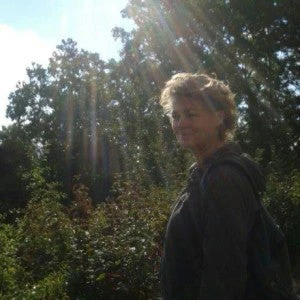Water can be a key trigger of conflict among communities or between citizens and the state. This is happening all over the world: from Iraq to Guatemala and from Mali to Lebanon. Preventing water-related conflicts can save lives and is good for the economy. The Water, Peace and Security (WPS) partnership and the Geneva Water Hub show how water-related conflict prevention looks in practice, and how to measure the success of such programs. Clarity about programming and measuring impact are needed to unlock more investment in conflict prevention and to do so efficiently and effectively.
“Water is becoming more scarce relative to demand,” says Dominick Revell de Waal, senior economist at the World Bank, “with population and economic growth this is inevitable”. When water insecurity repeatedly affects populations, it can increase the risk of conflict, fueling the perception that institutions and governments are not doing enough, exacerbating grievances, creating new risks, and deepening inequities. Water-related fragility can manifest itself from local conflict between fishers, farmers and herders about access to wetlands to international conflict between entire countries over the construction of a dam. “Greater fragility in turn, makes it harder to achieve water security. We must disrupt the vicious cycle of water insecurity and fragility”, says de Waal.
When combined with perceptions of exclusion and inequality, water-related conflicts can spill over into violence and instability across the world, fueled by the effects of climate change, and resulting in unacceptably high financial and human costs. The international community is increasingly calling for violent conflict prevention for two main reasons: prevention saves costs and lives. Prevention saves lives because people do not resort to violence and take up arms, and it saves money because investment in crisis response during and reconstruction after conflict is much more costly than investment in prevention. According to the latest Global Peace Index, for instance, if the world decreased violence by just 10%, our global economy would save $1.45 trillion.
Despite the case for prevention, only a small amount of development aid goes that way. Growth of Official Development Assistance (ODA) is concentrated in fragile contexts, but most of this growth has been in humanitarian assistance. In 2016, only 2% of ODA for fragile contexts was dedicated to conflict prevention. There are two key reasons for this. First, the lack of clarity about what conflict prevention means for programming. Second, it is very difficult to quantify and measure success in preventing conflict.
Programming related to water, wetlands and conflict prevention requires a multi-pronged approach. The Water, Peace and Security (WPS) partnership, a collaboration among an expanding group of organizations supported by the Netherlands Ministry of Foreign Affairs, puts forward four key components: understanding, awareness raising, capacity development and dialogue. What does that mean in practice?
Mali is a case in point. Karounga Keïta, director of Wetlands International Sahel Office, one of the WPS partners, describes the situation in Mali: “Conflicts around water resources in the Inner Niger Delta, a major wetland in the center of Mali, contribute to violence in the country. The wetland supports the livelihoods of up to two million people including farmers, fishermen and pastoralists. Since 2012 there has been an intensification of violence in Mali, including violent competition over natural resources provided by the wetland, such as watergrass fields - essential breeding grounds for fish and a vital food resource for the region’s cattle – and fish.”
Such degradation of the wetland can fuel an already complex situation where jihadist groups have been able to get support based on old grievances. Understanding the links between water, wetlands, peace and security is therefore a key component of the WPS program approach. Awareness of these links by national and international actors helps to design water management systems that contribute to the prevention of more water-related conflict. This requires promoting dialogue at different levels and training key players (governments, civil society and others) in inclusive and sustainable water management, resulting in carefully designed investments that promote stability instead of undermining it.
Linking policy and science is a fundamental tool for conflict prevention. Collaboration is a key element of programming related to water, wetlands and conflict prevention; at local, national and international levels. “Water is at the heart of the sustainable development, peace and humanitarian agendas”, says Danilo Türk, lead political advisor of the Geneva Water Hub, a joint initiative of the Swiss Confederation and the University of Geneva. The Geneva Water Hub aims at bringing together actors implementing the global agenda on water and local stakeholders. It works to ensure that water is used as a vehicle for peace and, the water-peace discourse is better understood and recognized.
Measuring the impact of water and wetland related programs on conflict and fragility is challenging. “It requires both general and specific monitoring approaches”, says Aseel Naamani, program manager in Lebanon at International Alert, another member of the WPS partnership.
Eight years into the Syrian crisis, tensions between host communities and Syrian refugees in Lebanon are still high. The deepening economic crisis pushes more people in Lebanon into poverty and in need of services. Women have identified access to water as one of the drivers of conflict. Alert uses key performance indicators as a monitoring and management tool to review, adapt and monitor their water and conflict program.
“We design indicators to capture progress and success at different levels and we analyze relations with gender and age because men, women and different age groups respond to and interact with water issues in different ways”, says Naamani. Indicators include accessibility of local populations to water resources, levels of violence and insecurity as experienced by local stakeholders and strengthened rule of law. Dialogue in the Bekaa valley, facilitated by Alert’s program, highlighted the central role of municipalities in curbing inter-community tensions by ensuring conflict and gender-sensitive approaches to provision of water, wastewater management and other services.
Measuring the impact of such water and wetland related programs on conflict and fragility will be key for making the case for more investment in conflict prevention, and ultimately making a real difference to people’s lives.
For more information about the cycle of water and fragility, programming to prevent water-related conflict, water as a connecter and measuring impact, listen to the podcasts with Dominick Revell de Waal (World Bank), Karounga Keïta (Wetlands International), Danilo Türk (Geneva Water Hub) and Aseel Naamani (International Alert).
This guest blog was contributed by Wetlands International as part of the Fragility Forum 2020.




Join the Conversation